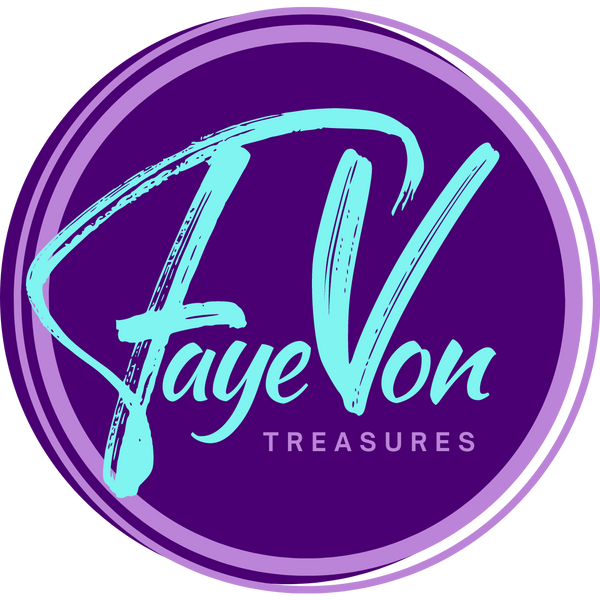
Treasure Hunt Tips: Secrets to Scoring the Best Vintage Finds
Share
There's a thrill that comes with unearthing a hidden gem, especially when it comes to vintage jewelry. Each piece tells a story, carrying with it a unique history and charm that modern creations often lack. But how do you navigate the bustling antique markets, consignment shops, and online auctions to find those truly special pieces? And more importantly, how do you ensure you're getting a great deal on genuine quality?
At Fayevon Treasures, we believe everyone can become a savvy vintage jewelry hunter. Here are our expert tips to help you score the best vintage finds and build a collection you'll cherish.
Identifying Vintage Gems: What to Look For
The first step to a successful treasure hunt is knowing what you're looking for. It's not just about aesthetics; it's about understanding the hallmarks of authentic vintage pieces.
-
Examine the Craftsmanship:
Vintage jewelry often boasts superior craftsmanship compared to mass-produced modern pieces. Look for intricate details, hand-finished elements, and secure settings. Are the prongs holding the stone securely? Is the filigree work delicate and precise?
-
Check for Hallmarks and Signatures:
Many reputable jewelers and manufacturers from bygone eras stamped their pieces with hallmarks or maker's marks. These tiny symbols can reveal the metal purity (e.g., "14K" or "925" for sterling silver), the year of manufacture, or the artisan who created it. A quick online search of these marks can often provide valuable information about the piece's origin and authenticity.
-
Understand Eras and Styles:
Familiarize yourself with the popular jewelry styles of different eras (e.g., Art Deco, Art Nouveau, Victorian, Mid-Century Modern). Knowing the typical designs, gemstones, and metalwork associated with each period can help you identify a piece's age and determine if it's truly vintage.
-
Look for Patina, Not Damage:
True vintage pieces will often show a natural patina – a gentle tarnish or softening of the metal over time. This is a sign of age and authenticity, not damage. However, be wary of excessive wear, deep scratches, or obvious repairs that detract from the piece's integrity.
Spotting Quality Materials: More Than Meets the Eye
Once you've identified a potentially vintage piece, the next crucial step is to assess the quality of its materials. This is where a keen eye and a bit of knowledge come in handy.
-
Test the Metal:
If possible, ask if you can gently test the metal. While not always feasible in all settings, a small magnet can help determine if a piece is gold or silver (which are generally not magnetic). For more precise identification, you might look for acid testing kits or consult with a reputable jeweler.
-
Examine Gemstones Closely:
Look for the brilliance and clarity of the gemstones. Are they securely set? Do they show natural inclusions (tiny imperfections within the stone), which can often indicate a genuine gemstone rather than a synthetic one? If you're unsure about a stone's authenticity, consider getting it appraised by a certified gemologist.
-
Feel the Weight:
High-quality vintage jewelry often has a satisfying weight to it, indicating the use of substantial metal and genuine gemstones rather than lighter, cheaper materials.
-
Check the Clasp and Hinges:
Even the small components matter. A well-made clasp should feel secure and operate smoothly. Hinges on bracelets or necklaces should be sturdy and show no signs of weakness.
Negotiating the Best Deals on Consigned Jewelry
Finding a beautiful vintage piece is one thing; getting it at a great price is another. Consignment shops, in particular, often offer more flexibility for negotiation than fixed-price antique stores.
-
Do Your Research (Before You Go!):
Before heading out, have a general idea of the market value for similar vintage pieces. Online platforms, auction results, and reputable vintage jewelry dealers can provide a good benchmark.
-
Inspect Thoroughly for Flaws:
Even minor imperfections can be a negotiating point. Point out any small scratches, loose prongs, or signs of wear. While these might not deter you from buying, they can justify a lower price.
-
Be Polite and Respectful:
A friendly demeanor goes a long way. Start with a polite inquiry about the price and then express your interest while subtly mentioning any areas of concern you noticed during your inspection.
-
Offer a Reasonable Price:
Don't start with an absurdly low offer. Aim for a price that's fair to both you and the seller, leaving some room for negotiation. A good starting point might be 10-20% below the asking price, depending on the item and the venue.
-
Bundle if Possible:
If you're interested in multiple pieces from the same seller, inquire about a discount for a bulk purchase. This can often lead to significant savings.
-
Know When to Walk Away:
Not every negotiation will be successful, and that's okay. Be prepared to walk away if you can't reach a price you're comfortable with. There will always be other treasures to find!
Happy hunting, and remember, the most valuable vintage find is often the one that truly speaks to your heart. At Fayevon Treasures, we curate a collection of unique vintage jewelry, each piece chosen for its beauty, quality, and story. We're passionate about helping you discover your next cherished heirloom.
